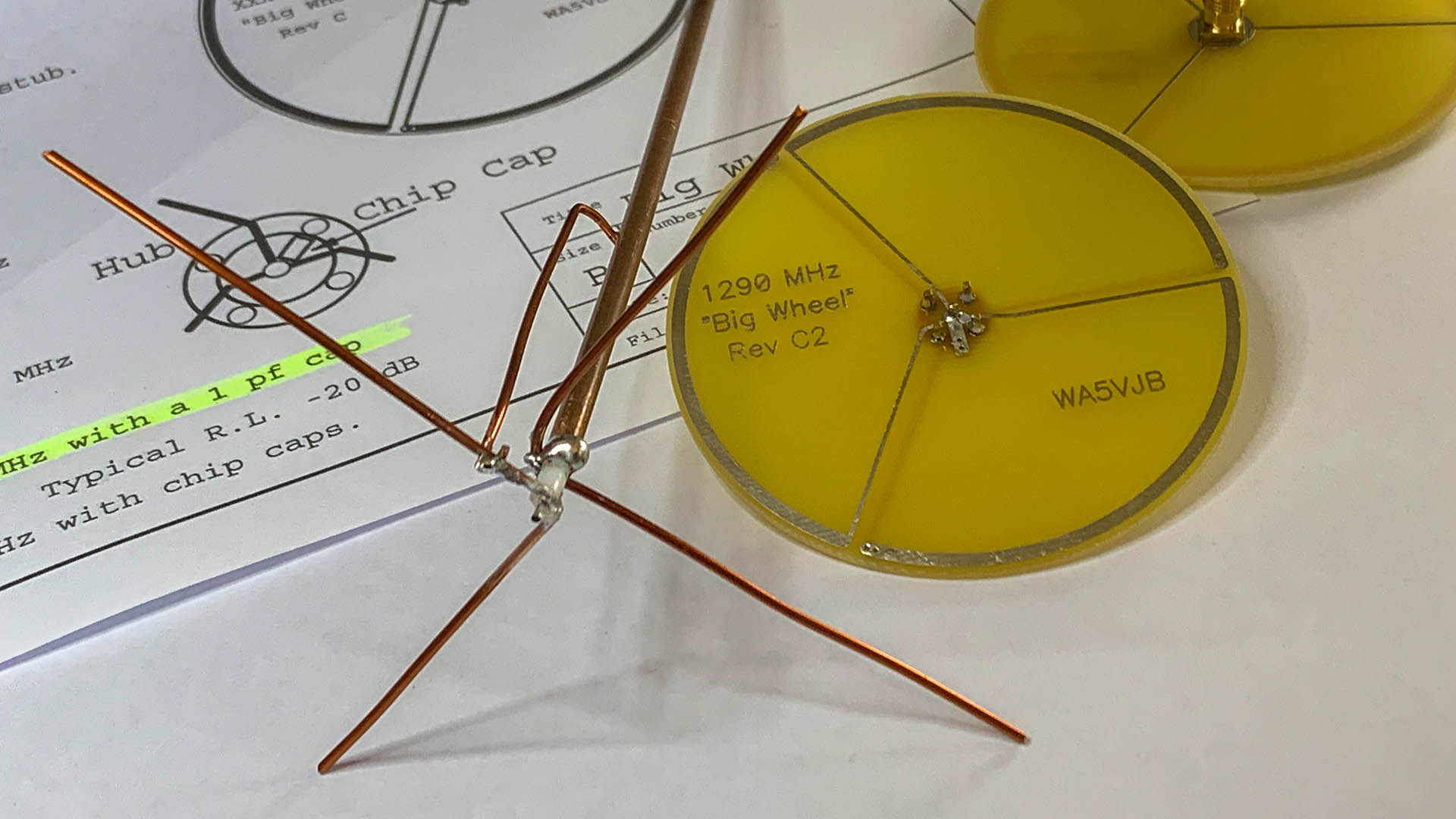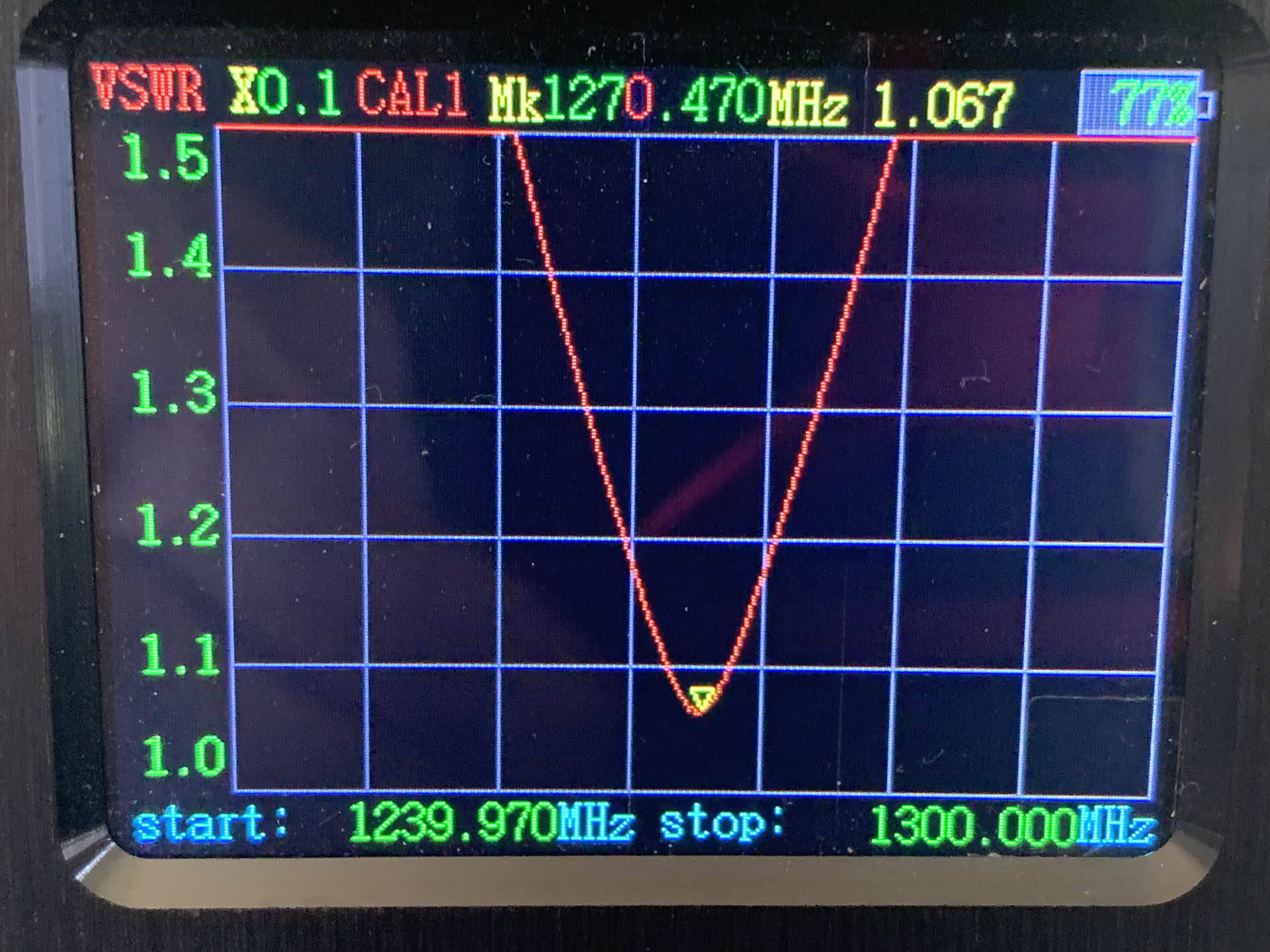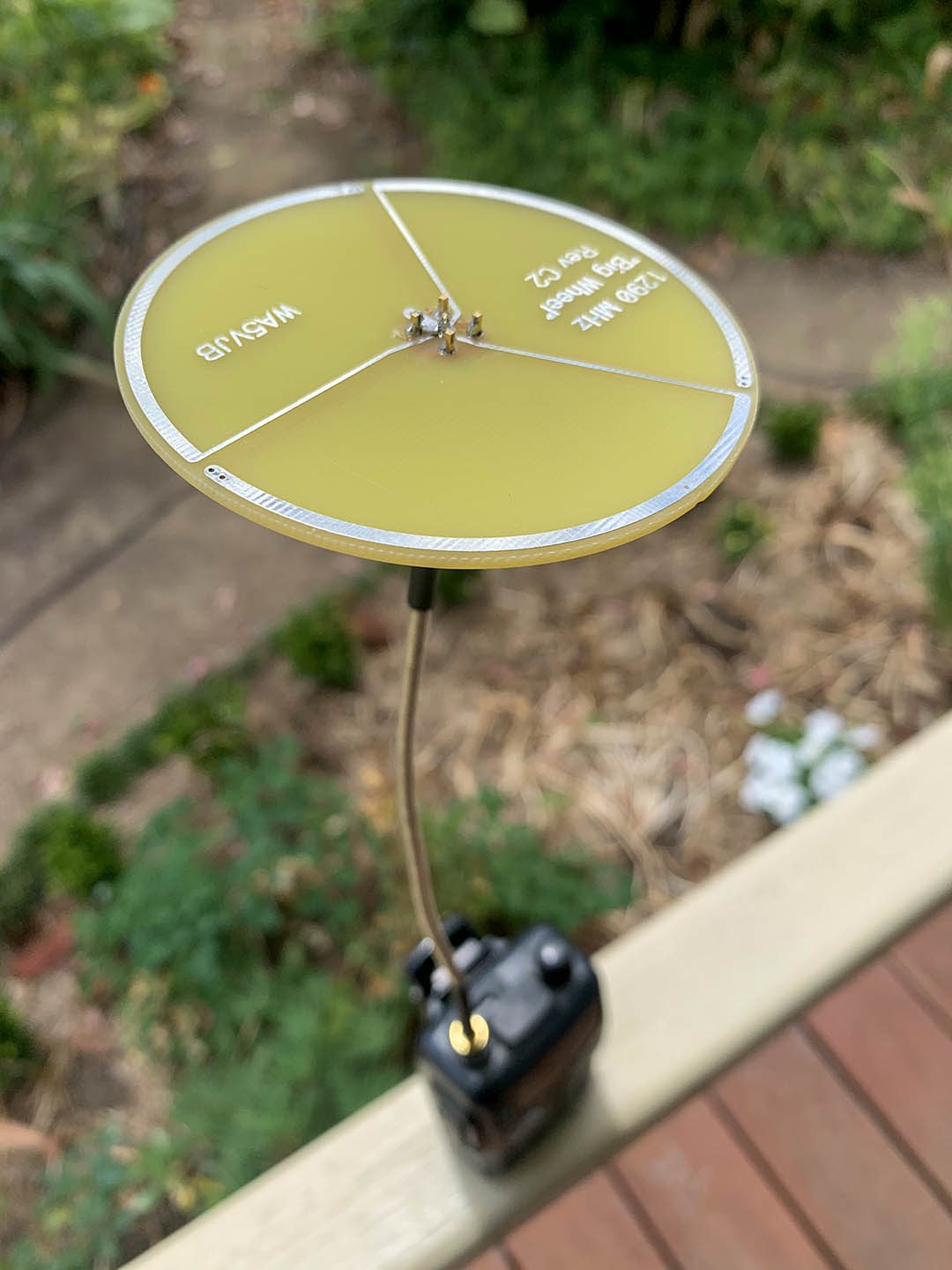
22 Jan Cheap 1296 MHz Antennas
Last Updated on July 6, 2023
Cheap 1296 MHz Antennas for QRP applications
1200 MHz Big Wheel Antenna by Kent Electronics
Recently the Mount Martha beacon VK3RST obtained a 23cm allocation so the quest for a suitable antenna began.
Like all good antenna adventures, it started with a Google search to see what others were using. I’d built a turnstile antenna that works well for 70cm but I came across a few beacon operators that were using halo or circular-style antennas that are omnidirectional with horizontal polarisation so i thought I’d check them out for suitability.
I came across the 1290 Mhz Big Wheel by Kent WA5VJB. These PCB wheel antennas have a gain of about 2dBi and resonate at about 1305 MHz according to the specification sheet. They can be retuned to 1295 MHz with the addition of a 1pf cap placed across the SMA connector.
Having soldered an SMA to the PCB, I tested the antenna on a VNA. I found both antennas were resonant around 1270 MHz. The 1pf capactor moved the frequency down a few Megahertz. Unfortunately, the SWR wasn’t too flash at the published frequency.
The cost of purchasing 2 antennas, including post to Australia, was $43 USD which equated to $71.27 AUD. I actually ended up getting Kent to send me a replacement set as the first package went missing in action. According to Australia Post it never made it out of the US.
You can order Kent’s antennas from his WA5VJB page.
Cheap 1296 MHz Antennas – Crossed Dipole Antenna
Crossed dipole antennas are failsafe omnidirectional horizontal antennas. They just seem to work without too much fuss or effort. What’s more, they’re easy to make on the workbench unlike some of the lower-frequency antennas. A crossed dipole antenna is a type of dipole antenna in which the two conducting elements are arranged at a 90-degree angle to each other. This configuration is used to provide a circularly polarized electromagnetic field, which can be useful in certain types of wireless communication systems.
This crossed dipole antenna was made from parts I already had laying about. As a microwave enthusiast, I had some rigid RG-401 in the junk box and the enameled wire was also in plentiful supply in the garage. You could quite easily use some mains power cable solid copper conductor.
The inspiration for this antenna came from Paul W1GHZ. Paul is renowned for his legendary microwave projects so I knew this one would be tried and tested. Pauls’s article is on the W1GHZ website. My dimensions were slightly longer than Paul’s.
The cost of making this crossed dipole antenna is… well under $10 if you had to buy parts, but you should have most of what your need in the junk box already. It took no more than 15 minutes to make, So the good news is the antenna plot as shown below.
As you can see it’s quite flat over the 20 MHz between 1280 and 1300 MHz. As the beacon frequency is 1296.432, that’ll do nicely. The wheel was just too high at this frequency.
On Air Observations
To test both antennas I have an Icom IC-T81 handheld. It has 1296 Mhz at 1 watt. Mike VK3BDL was about so we went to 1294.0 FM to test the strength and reception of signals over out path of 32km.
As you can see below, the path is over Port Phillip Bay pretty much line-of-sight with the exception of the odd tree.
The photo above shows the T81 with the standard rubber ducky antenna. Mike VK3BDL was full scale as he was running 100 watts into a directional antenna. With a TX power of 1 watt, Mike reported an S9 signal using the rubber ducky.
Changing to the crossed dipole antenna with an SWR of just under 1.1, Mike observed signal strengths of 30 to 40dB over 9. Both TX and RX antennas were now both horizontal. I was moving about in a small space to try and average out the strength. I then swapped out the antenna and tried with the wheel PCB antenna. It’s SWR was greater than 1.5 on 1294 MHz. The signal strength was more or less the same but the flutter was more noticeable on the wheel antenna than on the crossed dipole. Mike said the strength on the wheel may have been slightly less than the crossed dipole.
Conclusion
So there are two cheap 1296 MHz Antennas – well one a lot cheaper than the other. There is no comparison in cost when it comes to building your own from available parts compared to buying and paying postage costs to land what is in effect two PCBs in the country from the United States. Cost aside, the performance of just one QSO between the Big Wheel and the crossed yagi antenna is neither here nor there. Both antennas performed better than the T81 rubber ducky as you’d expect, and were pretty much equal in performance with the exception of SWR.
You could always stack them too. The crossed dipole antenna has two crossed dipoles of unequal length. The longer one is specified as ~0.527λ long, while the shorter one, is ~0.42λ long. They are fed by coax, with a ¼λ balun mounted on the outer shield of the RG-401. The idea is that the longer dipole has an inductive reactance, while the shorter one has a capacitive reactance to compensate. The antenna is claimed to radiate circular polarization in the boresight direction.
And while on the subject of Cheap 1296 MHz Antennas, another small and efficient 1296 MHz antenna is a bi-quad. I use one portable with great success over long distances especially over Bass Strait with Dave VK37DC when the tropo is good. But that’s an antenna for another post.









